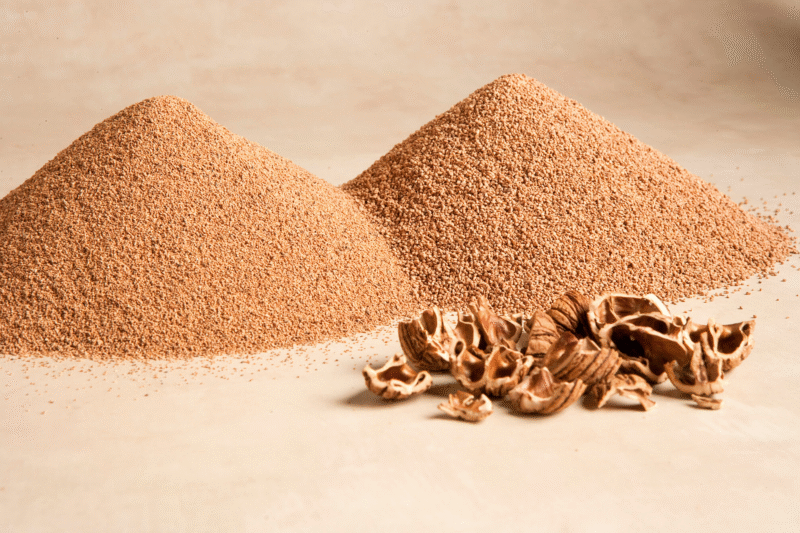Walnut Shell in Drilling Operations: Uses, Benefits & Applications
As the world progresses towards a sustainable future, industries worldwide have felt the pressing need to adapt and innovate. Environmental stewardship and sustainability have transitioned from being mere buzzwords to critical factors that influence industry operations, not least in the field of oil and gas drilling. In this light, a surprising champion has emerged in the form of a humble nut’s shell—the walnut. The incorporation of walnut shell in drilling operations has stirred quite a revolution, introducing a game-changing shift in industry practices.
Natural Additives in the Oil & Gas Industry
As oil and gas drilling becomes increasingly complex, the demand for eco-friendly and high-performance additives has grown. One such sustainable solution is the walnut shell, a biodegradable, non-toxic byproduct of the food industry. Its unique properties make it highly valuable in drilling fluids and lost circulation material (LCM) applications.
🌰 What is Walnut Shell in Drilling?
Walnut shell is a hard, fibrous material obtained from crushed walnut husks. Once ground to specific mesh sizes, it becomes a versatile additive in oil and gas well drilling operations, especially in water- and oil-based muds.
It is primarily used for:
-
Lost circulation control
-
Wellbore stability
-
Filtration enhancement
-
Surface polishing and cleaning
Properties That Make Walnut Shell Effective
| Property | Value/Benefit |
|---|---|
| Biodegradable | Eco-friendly, minimal environmental impact |
| Hardness (Mohs Scale) | ~4.0 – durable and resistant to breakdown |
| Specific Gravity | 1.2 – 1.4 |
| Particle Size Range | 6 to 100 mesh |
| Solubility | Insoluble in water and oil – perfect for drilling |
| Reusability | Can be reclaimed and reused in some operations |
The Significance of Drilling Fluids
To fully comprehend the radical role of walnut shell in modern drilling, it’s essential to explore the significance of drilling fluids in oil and gas operations. Commonly referred to as drilling mud, these fluids have an array of critical functions. They serve to lubricate and cool the drill bit, carry drill cuttings to the surface, stabilize the wellbore, and prevent formation fluids from invading the wellbore.
Historically, the composition of drilling fluids incorporated water, clay, and an assortment of chemical additives. But such conventional fluids have presented a series of challenges. Synthetic additives tend to be expensive and carry a potential risk of environmental harm. Water-based muds, on the other hand, often struggle to maintain their viscosity and may cause damage to sensitive formations.
Amidst these challenges, the unassuming walnut shell has emerged as an unexpected yet compelling solution.
Key Applications of Walnut Shell in Drilling Operations
1. Lost Circulation Material (LCM)
One of the most critical uses of walnut shell is in preventing or mitigating lost circulation during drilling. It works by plugging porous and fractured formations, reducing mud loss.
🔹 Recommended Sizes:
-
Coarse (4–10 mesh)
-
Medium (12–20 mesh)
-
Fine (30–100 mesh)
Blends of different sizes offer maximum sealing capability.
2. Wellbore Stability
Walnut shells support shale inhibition and mechanical wellbore integrity. By creating a filter cake over the formation, they minimize fluid invasion and prevent formation collapse.
3. Filtration Control
Walnut shell helps reduce fluid loss through the borehole wall by improving the filter cake quality. This maintains mud circulation pressure and improves drilling efficiency.
4. Decontamination and Cleaning
In some offshore and industrial operations, walnut shells are used in surface cleaning and mud decontamination due to their abrasive but non-damaging texture.
Walnut Shells: The Unconventional Powerhouse
Walnut shells fall under the category of lost circulation materials (LCMs). LCMs are substances incorporated into drilling fluids to prevent the loss of circulation—a situation when the drilling fluid seeps into formations instead of returning to the surface. Loss of circulation can inflate operational costs, introduce non-productive time, and even induce well-control problems.
The incorporation of walnut shells as LCMs has gained remarkable popularity due to several factors:
- Environmentally Friendly and Biodegradable: Walnut shells, being a natural product, are biodegradable and pose significantly less environmental harm compared to their synthetic counterparts.
- Cost-effectiveness: Being a byproduct of the food industry, walnut shells are not only abundantly available but also comparatively cheaper.
- Resistant to Crushing and Degradation: Walnut shells have an inherent hard and durable nature that renders them resistant to crushing under high pressure and degradation, making them an ideal additive to drilling fluids.
- Versatility: Walnut shells exhibit great versatility as they can be utilized in both water-based and oil-based drilling fluids without adversely affecting the fluid properties.
How Walnut Shell is Used in the Field
-
Blend Selection: Engineers select the appropriate mesh sizes based on formation type and severity of mud loss.
-
Mixing: The walnut shell is added to drilling mud via a mixing hopper or directly in the active system.
-
Circulation: It circulates through the system, sealing off fractures or porous zones.
-
Monitoring: Drilling parameters and mud losses are monitored to adjust dosage.
Implications for the Drilling Industry
The incorporation of walnut shells in drilling operations signifies much more than just a fleeting trend. It has the potential to transform the industry dynamics, facilitating a shift towards more sustainable and cost-effective drilling practices. It offers a practical and efficient solution, especially in challenging formations where lost circulation poses a significant concern.
Furthermore, the utilization of walnut shells aligns perfectly with the broader shift towards a circular economy in the oil and gas industry. This model advocates that waste products from one process can provide valuable inputs for another, thereby promoting resource efficiency.
❓ FAQs About Walnut Shell in Drilling
Q1: Is walnut shell safe for offshore operations?
Yes, it is non-toxic and accepted in offshore environments due to its biodegradability.
Q2: How does walnut shell compare to synthetic LCM?
It offers similar performance but is safer, cheaper, and environmentally preferable.
Q3: Can walnut shell affect downhole tools?
No. It is soft enough not to damage tools but hard enough to plug fractures.
Q4: What types of formations benefit most?
Fractured carbonates, unconsolidated sands, and naturally porous zones.
Q5: Can walnut shell be reused?
Yes, in some systems, walnut shell can be reclaimed and reused after proper separation.
🧾 Conclusion: A Smart, Sustainable Choice in Drilling Fluids
The use of walnut shell in modern drilling operations offers a cost-effective, reliable, and environmentally responsible solution for challenges like lost circulation, wellbore instability, and fluid loss.
As the oil and gas industry moves toward sustainable practices, natural materials like walnut shell provide the performance needed without compromising safety or environmental impact.
📦 Looking for Quality Walnut Shell LCM?
At Pars Universal Bitumen, we supply premium-grade walnut shell for drilling operations, optimized for oilfield use with customizable mesh sizes.
✅ Why Choose Us?
-
Quality-controlled batches
-
Bulk packaging options (bags, sacks, big bags)
-
Global shipping & export documentation
-
Mesh sizes: 4–6, 6–12, 12–20, 20–40, 30–100
📧 Email: [email protected]
📞 Phone: +971 4 878 2031
🌐 Website: PUB-Ltd
📩 Request a Quote Today and elevate your drilling performance with natural-grade walnut shell. If You have any other Query or Question you want to ask, Please don’t hesitate to Contact Us.





